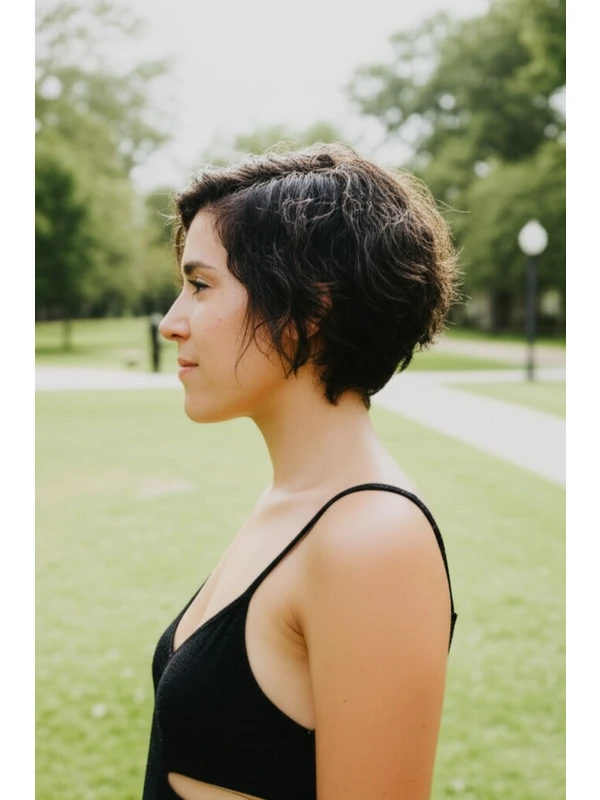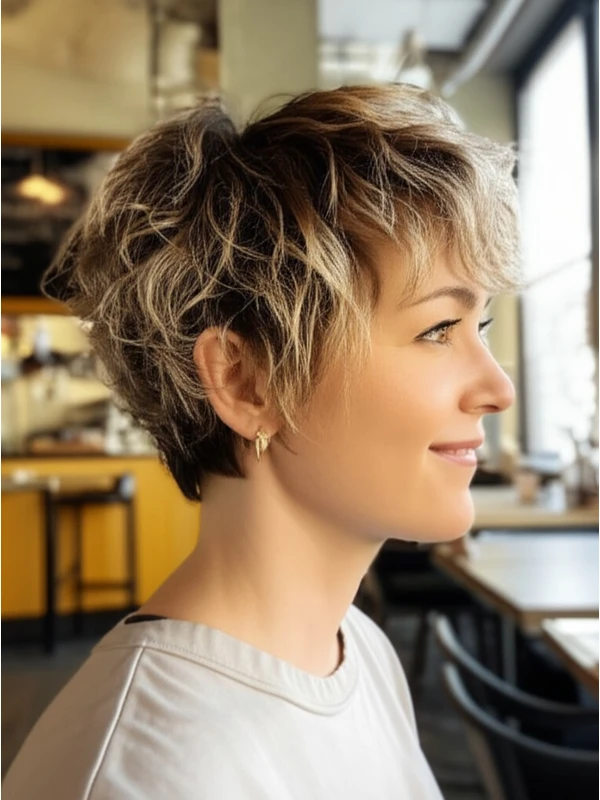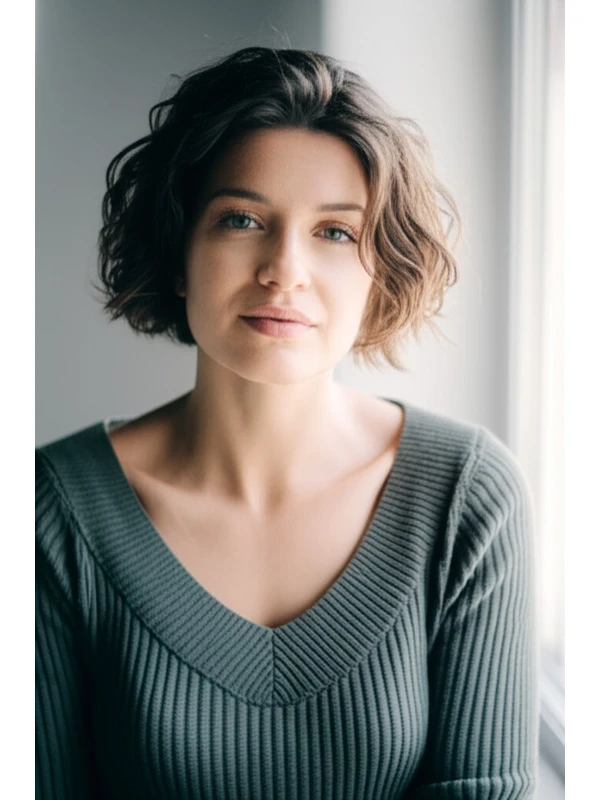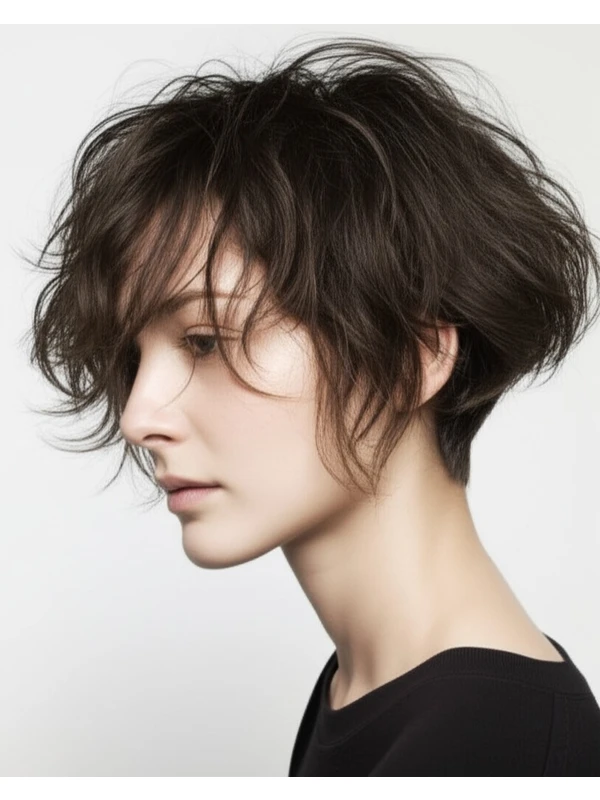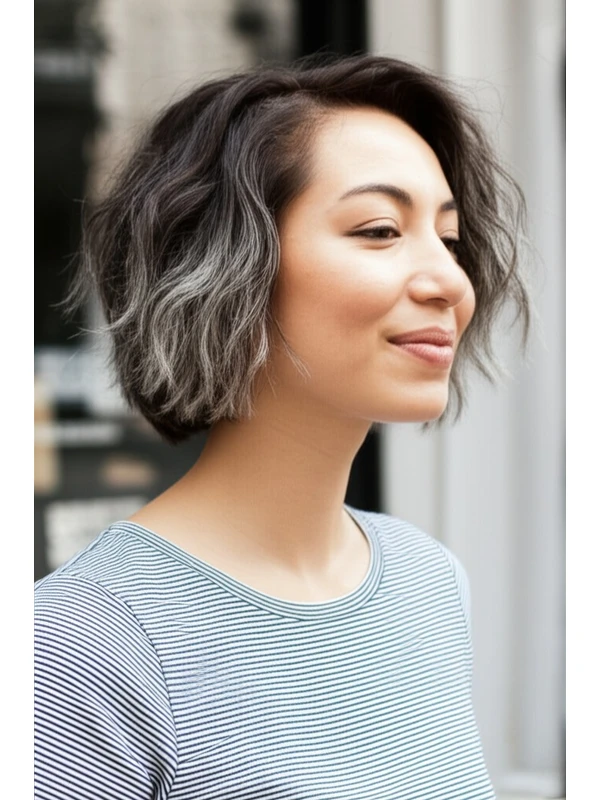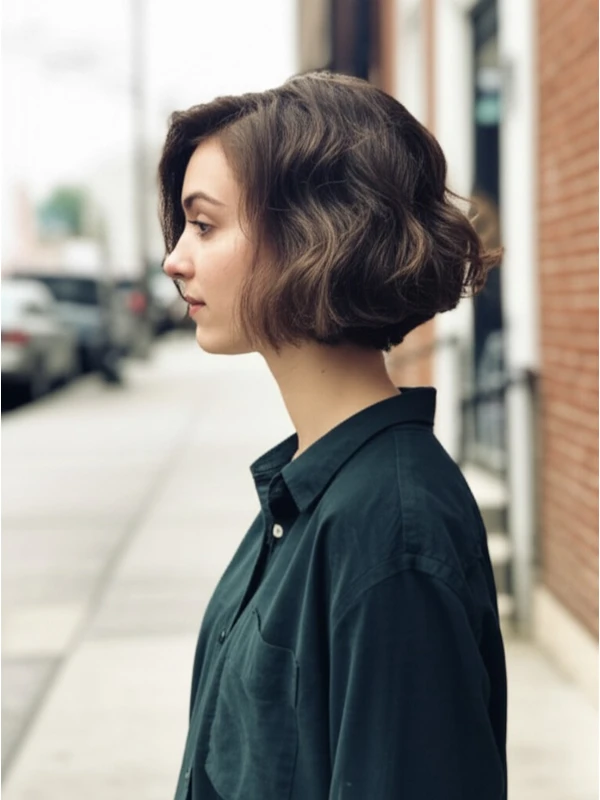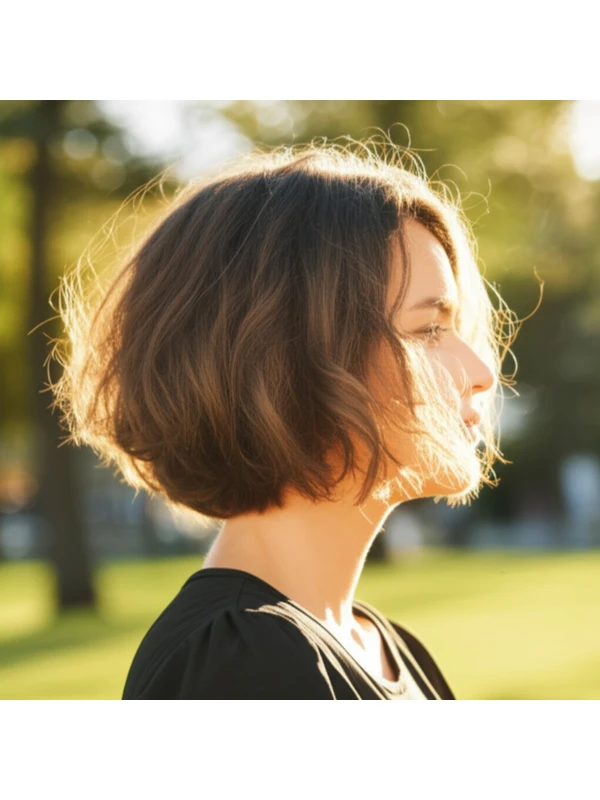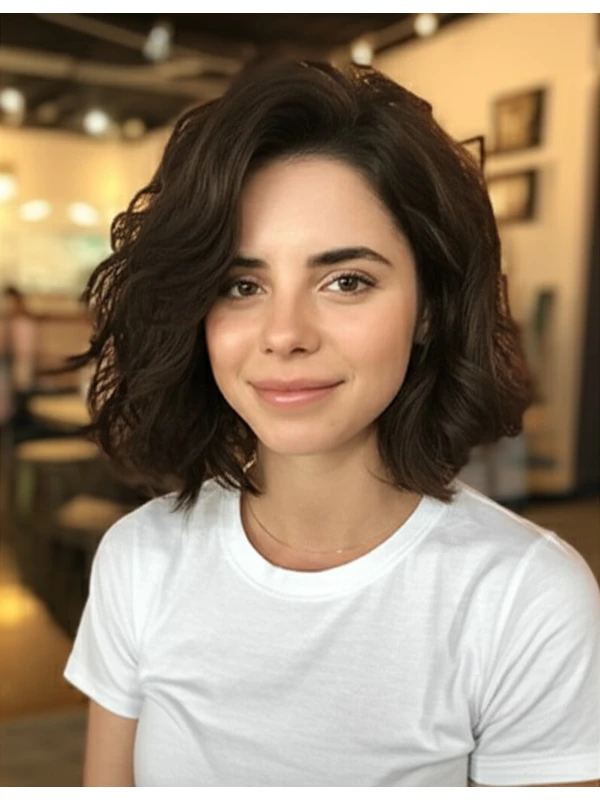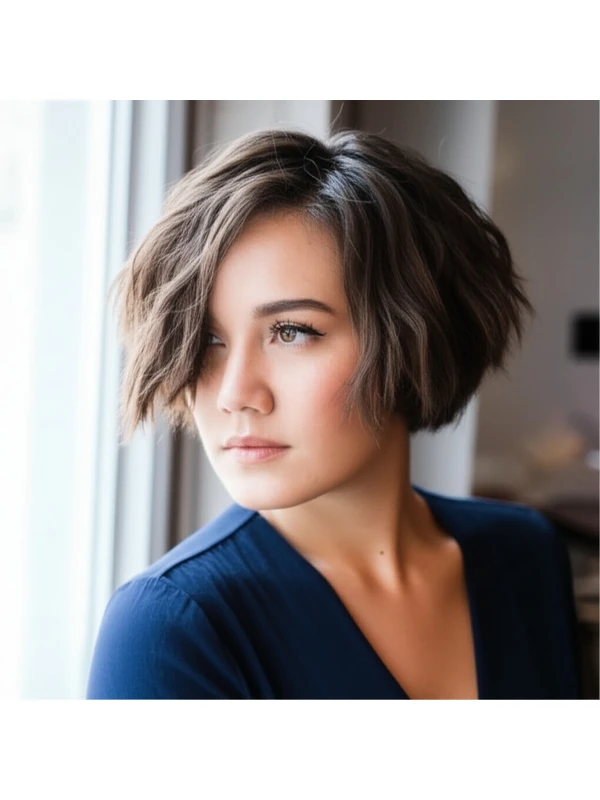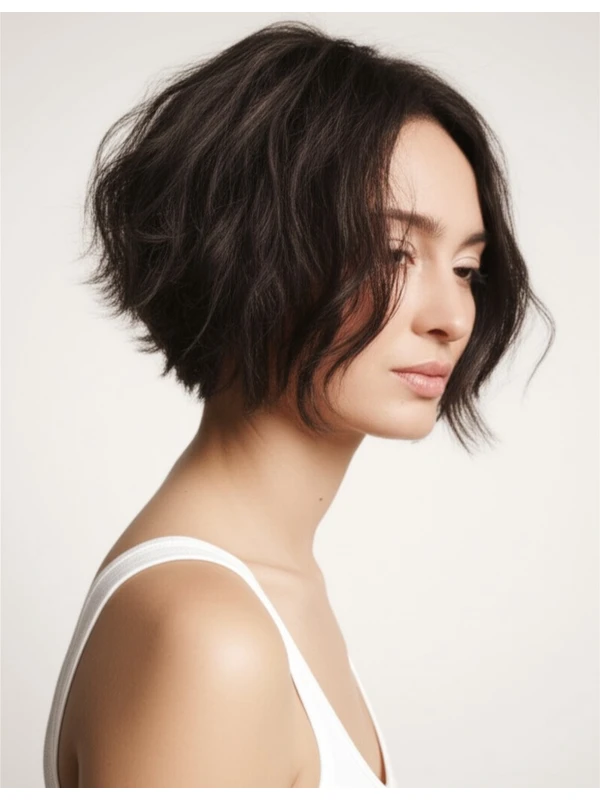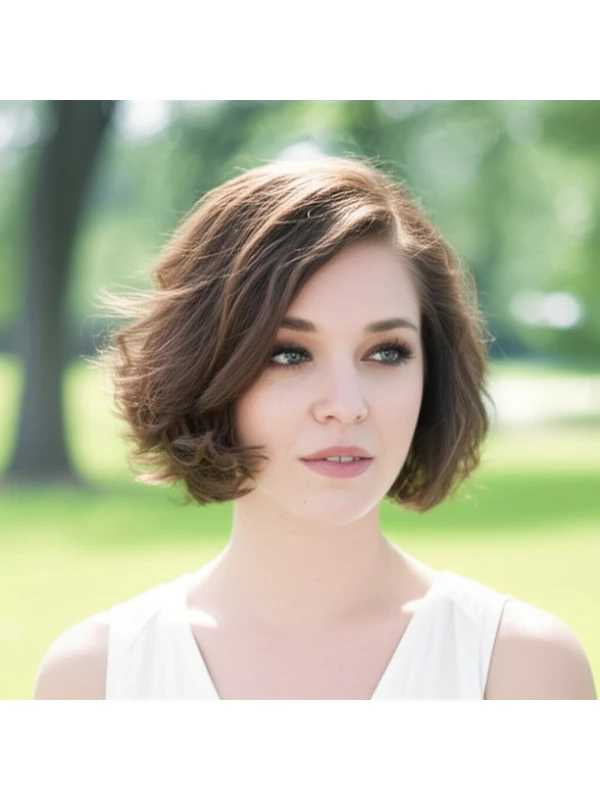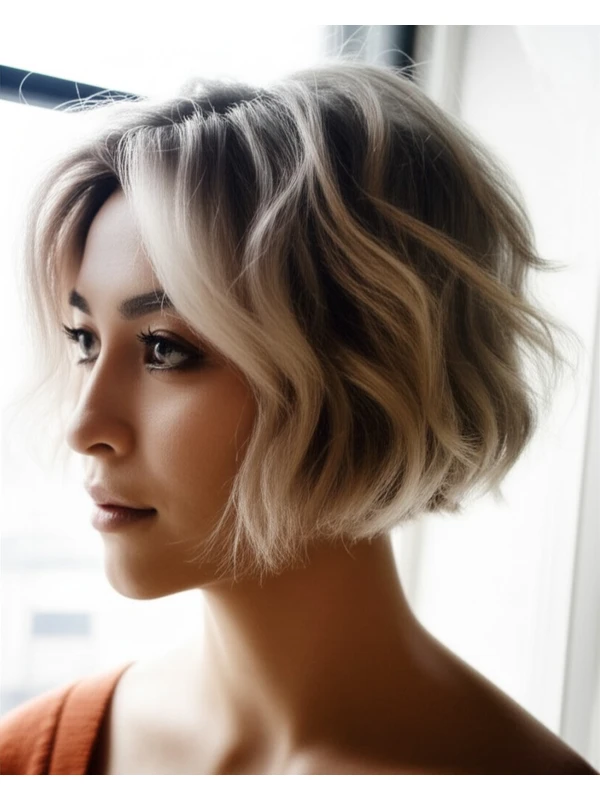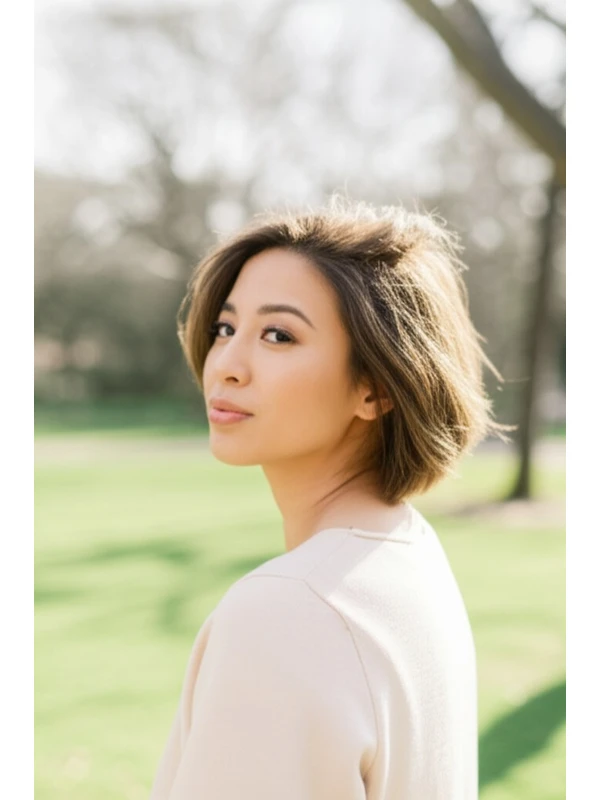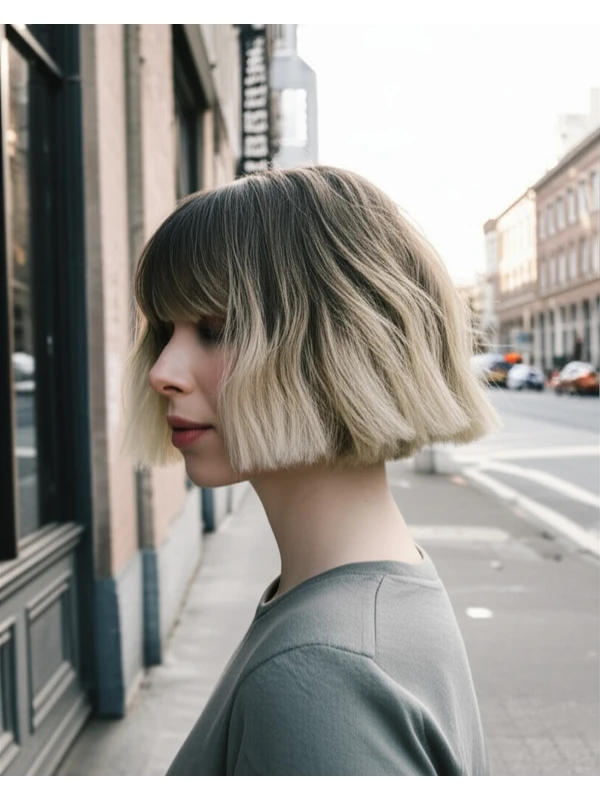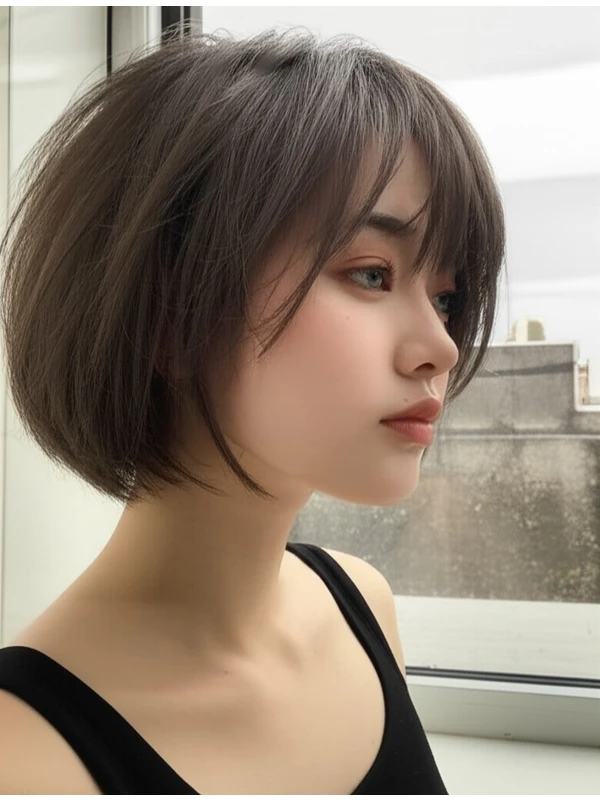#The Textured Bob: A Modern Classic for Every You
The textured bob is having a moment – and for good reason! It's effortlessly chic, adaptable to almost any hair type, and can be customized to flatter your unique features. But what exactly is a textured bob? Let’s dive in.
#1) Background & Definition: What Makes a Textured Bob a Bob?
A textured bob is essentially a short-to-medium length haircut with layers that create movement and volume, moving away from the blunt, one-length look of traditional bobs. Think "modern" and "undone," rather than perfectly polished.
- Cut Geometry: It’s typically cut around the jawline or slightly longer (chin to collarbone). The key is graduated layers that start somewhere between the chin and mid-shaft, creating a soft, piecey effect.
- Key Features: Texture! Layers are essential for this style; they remove weight and create natural movement. The overall shape should feel intentionally effortless – not overly structured.
- Length Ranges: Generally falls between 5-10 inches (13-25 cm) from the crown of your head. The ideal length depends heavily on your hair type, face shape, and personal preference.
- Alternative Names: "Shag Bob," "Layered Bob," "Choppy Bob" – all these terms are often used interchangeably, though “shag bob” tends to imply even more dramatic layering.
#2) Face Shape Fit: Finding Your Perfect Balance
The beauty of the textured bob is its versatility, but understanding how it interacts with your face shape will help you and your stylist achieve the most flattering result.
- Oval: Lucky you! Almost any length and layer combination works beautifully on oval faces. Experiment with side parts or a soft fringe for extra dimension.
- Round: A textured bob with layers that start higher up (around chin level) can visually lengthen a round face. Avoid blunt cuts at the jawline, as they emphasize width. A slightly angled front and subtle layering around the cheekbones are your friends. Fringe Option: A wispy, side-swept fringe softens angles.
- Square: Soften those strong angles! Layers that begin mid-shaft will add movement and soften a square jawline. Avoid harsh lines or blunt edges. An asymmetrical cut (slightly longer on one side) can also be very flattering. Fringe Option: A textured, piecey fringe helps break up the angularity.
- Heart: Balance a wider forehead with layers that start higher up and create volume around the chin area. Avoid too much height at the crown, as this can exaggerate the heart shape. Fringe Option: A long, sweeping fringe softens the forehead and draws attention downwards.
- Diamond: Textured bobs work well to soften diamond shapes by adding balance. Focus on layering that creates width at the jawline while keeping volume away from the widest part of your cheekbones. Fringe Option: A soft, feathered fringe can help camouflage a wider forehead.
- Oblong (Long): A textured bob with shorter layers and more volume across the sides will visually shorten an oblong face. Avoid very long bobs that elongate the face further. Consider adding subtle bangs to break up the length. Fringe Option: Blunt, straight-across fringe can help create width.
#3) Body Proportions & Height Guidance: Tailoring Your Bob
Your overall body shape and height also influence how a textured bob will look on you.
- Petite: Shorter bobs (chin to jawline) often work best for petite individuals, as longer lengths can overwhelm the frame.
- Average: Most lengths within the 5-10 inch range are suitable. Consider shoulder-skimming styles for a balanced look.
- Tall: Longer textured bobs (collarbone length or slightly below) create a more proportional silhouette.
- Narrow Shoulders: Layers that add volume at the shoulders will visually broaden them, creating balance with a narrower upper body.
- Broad Shoulders: Avoid adding too much volume directly at the shoulder line; instead, focus on layering through the mid-lengths to distribute weight and create a softer look.
- Short Neck: Shorter bobs that end above the collarbone can help elongate the neck visually. Avoid styles with excessive back volume.
- Long Neck: Longer textured bobs (collarbone length or longer) work well, as they fill out the space between the shoulders and jawline.
#4) Works Best With Hair Types & Densities: Finding Your Match
The beauty of this style is its adaptability, but understanding how it interacts with your hair's natural texture is key.
- Straight: Layers create movement that straight hair often lacks. Fine, straight hair can benefit from blunt ends to avoid looking too thin.
- Wavy: The textured bob enhances natural waves! Layers prevent the wave pattern from becoming too triangular or boxy.
- Curly: A textured bob defines curls and reduces bulk. Consider a Deeper Layered approach for more curl definition.
- Coily: This style provides shape and manageability to coily hair, reducing shrinkage and promoting defined coils. Shrinkage Factor: Coils can shrink significantly! Account for this when determining the length – what looks like 8 inches wet might only be 5-6 inches dry.
- Fine Hair: Layers add volume but avoid too many short layers that can make fine hair look sparse. Blunt ends at the bottom can create a fuller appearance.
- Medium Hair: The textured bob is generally very flattering for medium density hair – you have enough weight to hold shape, but still benefit from layering.
- Thick Hair: Layers are essential! They remove bulk and make the style more manageable. Consider point-cutting techniques to create even softer texture. Density Tip: If your hair is extremely thick, ask your stylist for "internal layers" – layers cut throughout the interior of the bob to reduce weight without sacrificing overall volume.
#5) Styling Variations: From Casual Cool to Evening Glam
The textured bob isn't just one look; it’s a canvas for creativity!
- Sleek vs. Textured: Sleek styles use smoothing products and minimal heat, while textured looks embrace natural waves and piecey-ness with texturizing sprays or sea salt sprays.
- Middle vs Side Part: A middle part creates symmetry and balance, while a side part adds softness and asymmetry.
- Fringe Variations: Wispy, blunt, side-swept – the possibilities are endless! Choose a fringe that complements your face shape and personal style.
- Occasion Styling:
- Casual: Air dry with a texturizing product for effortless cool.
- Office: Sleeked down with a serum or smoothing cream.
- Evening: Add waves using a curling wand or hot rollers, finished with hairspray for hold.
#6) Maintenance: Keeping Your Bob Looking Fresh
Regular trims are key to maintaining the shape and texture of your bob.
- Trim Cadence: Every 6-8 weeks is typical, depending on how quickly your hair grows and how much shaping you need.
- At-Home Routine: Gentle cleansing, moisturizing conditioning, and heat protection are essential.
- Heat vs Air Dry: While air drying enhances the textured look, occasional heat styling can help refine shape or create a smoother finish.
- Product Checklist: Shampoo & Conditioner (for your hair type), Leave-in Conditioner (especially for dry/curly textures), Texturizing Spray/Sea Salt Spray (for texture), Finishing Serum/Oil (to tame frizz).
- Estimated Daily Styling Time: 5-15 minutes, depending on the desired level of styling.
#7) Grow-Out Roadmap: Evolution Over Time
The textured bob doesn't just disappear as it grows out; it evolves!
- Months 1-3: The shape remains relatively consistent. Focus on maintaining texture with regular trims and texturizing products.
- Months 4-6: The layers may start to blend together a bit, potentially losing some definition. A trim can reshape the style and bring back that intentional texture. Consider adding face framing layers for more dimension.
#8) Color Pairings: Enhancing Your Bob's Dimension
Color can truly elevate a textured bob!
- Cool Undertones: Ashy blondes, cool browns, or even subtle silver highlights will complement cool skin tones.
- Warm Undertones: Honey blondes, caramel browns, or copper shades enhance warm skin tones.
- Low-Commitment Options: Balayage or babylights add dimension without a harsh root line and allow for gradual color changes.
#9) Season & Occasion Guide: Adapting to the Moment
- Spring/Summer: Embrace lighter colors, beachy waves, and effortless styling.
- Fall/Winter: Richer tones (like chocolate brown or burgundy), sleek styles, and added volume create a cozy vibe.
- Work: A polished bob with minimal texture is perfect for professional settings.
- Weddings & Parties: Add curls, braids, or decorative accessories to elevate your look.
#10) Cost & Time: Salon Investment
- Salon Time: Typically 45-90 minutes.
- Price Range: Expect a moderate investment – it's generally more than a simple trim but less than a complex balayage.
#11) Pros & Cons: Weighing the Trade-offs
Pros: Versatile, flattering on many face shapes, relatively low maintenance (with regular trims), modern and stylish. Cons: Requires regular trims to maintain shape, can look messy if not styled properly, layering may make fine hair appear thinner.
#12) Salon Consultation Script: Your Questions Answered
Here are some questions you can ask your stylist during a consultation:
- "I love the textured bob! Can you show me examples that would suit my face shape?"
- “How many layers do you think I need, considering my hair density and texture?”
- “What styling products will work best for my hair type to achieve this look?”
- “Can we discuss a grow-out plan so I know how the style will evolve over time?”
- "I'm nervous about losing too much volume. How can we ensure the cut still feels full?"
FAQs:
- Will a textured bob work with my fine hair? Yes, but it’s important to avoid excessive layering that could make your hair look sparse.
- How often do I need trims? Every 6-8 weeks is standard for maintaining the shape and texture.
- Can I style a textured bob with just air drying? Absolutely! Air drying enhances the natural texture, but heat styling can also be used to refine the look.
- Is this cut suitable for coily hair? Yes, it's a great option for defining curls and managing length. Be sure to discuss shrinkage with your stylist.
- What if I want bangs later on? It’s easier to add bangs after the initial cut than to remove them! Discuss bang placement during your consultation.
- Can I do this myself at home? While possible, a professional haircut ensures optimal shape and balance for your face shape and hair type.
